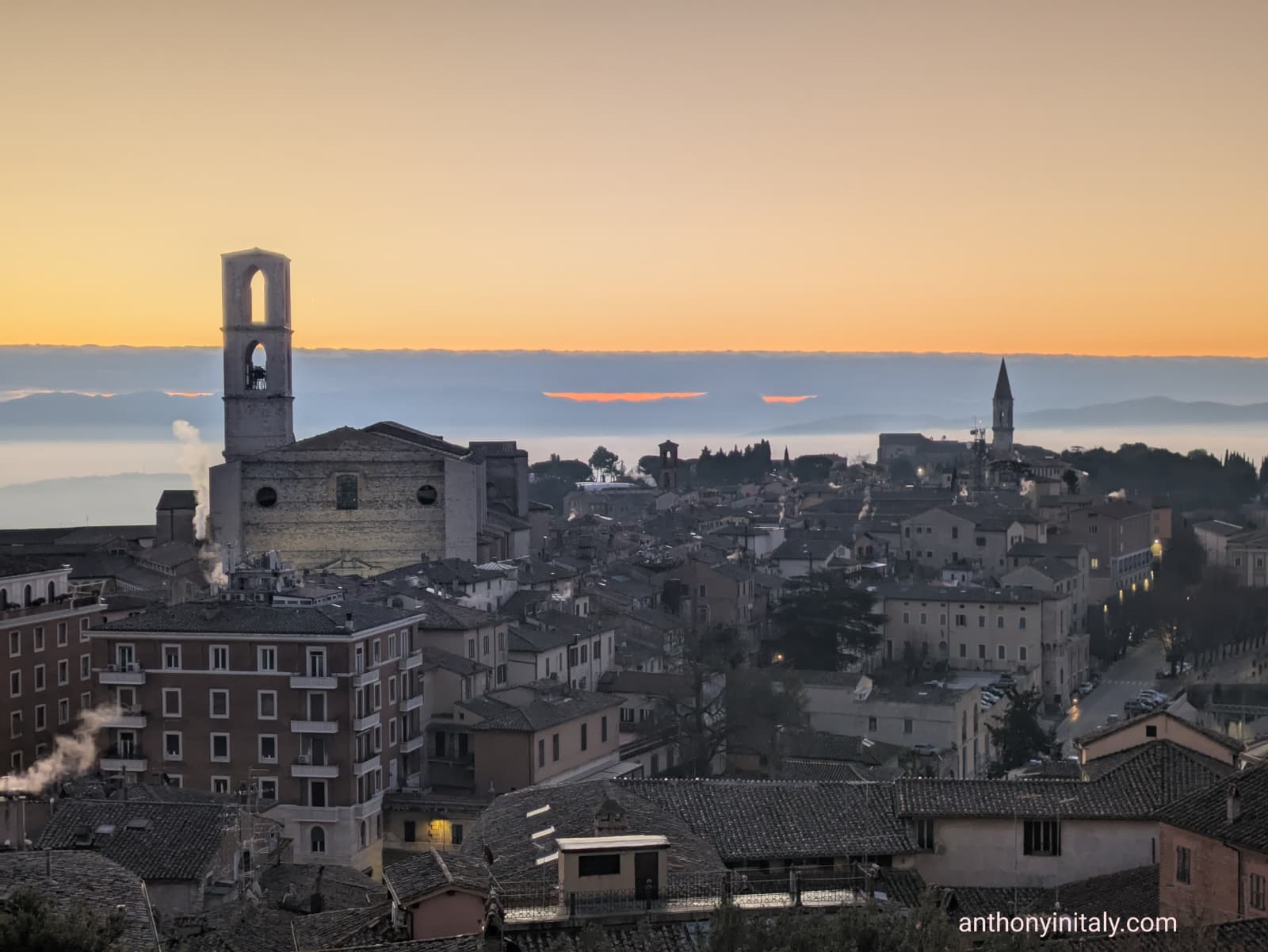6 Umbria Towns and Villages You Can Easily Get to Without a Car
I’ve been living in Umbria for nearly four years without a car.
While I’ll admit that Umbria is best explored with your own wheels, it’s absolutely possible to see a lot without one—especially if you’re happy sticking to towns with train stations. Even by train, you can experience some of the region’s most compelling places.
Between the ZTL zones, manual transmissions, and the guy on a Vespa cutting across three lanes of traffic like he’s in a video game, driving in Italy can feel like a full-contact sport. But that doesn’t mean you’re stuck.
If you’re exploring Umbria by train or bus, there are still plenty of solid options. These six towns and villages are places I’ve personally visited without a car. Here’s how to make them work for your trip.
1. Perugia
The regional capital. Big enough to have what you need, small enough to feel manageable. There’s a handy minimetro that runs from the train station up to the historic center—no uphill slog required.

Perugia has good food, an underrated art scene, and the kind of student energy that keeps things interesting. It has more grit than your average Umbrian hill town, but that’s part of its appeal. If you want a base with a music scene or nightlife that goes beyond 9 p.m., this is a solid bet.
👉 Here’s my full Perugia guide
2. Assisi
Most people know Assisi for St. Francis. But even if you’re not here for the pilgrimage, the town holds its own. From the train station, you can walk into town (about 25 minutes uphill), though a local bus makes it easier.
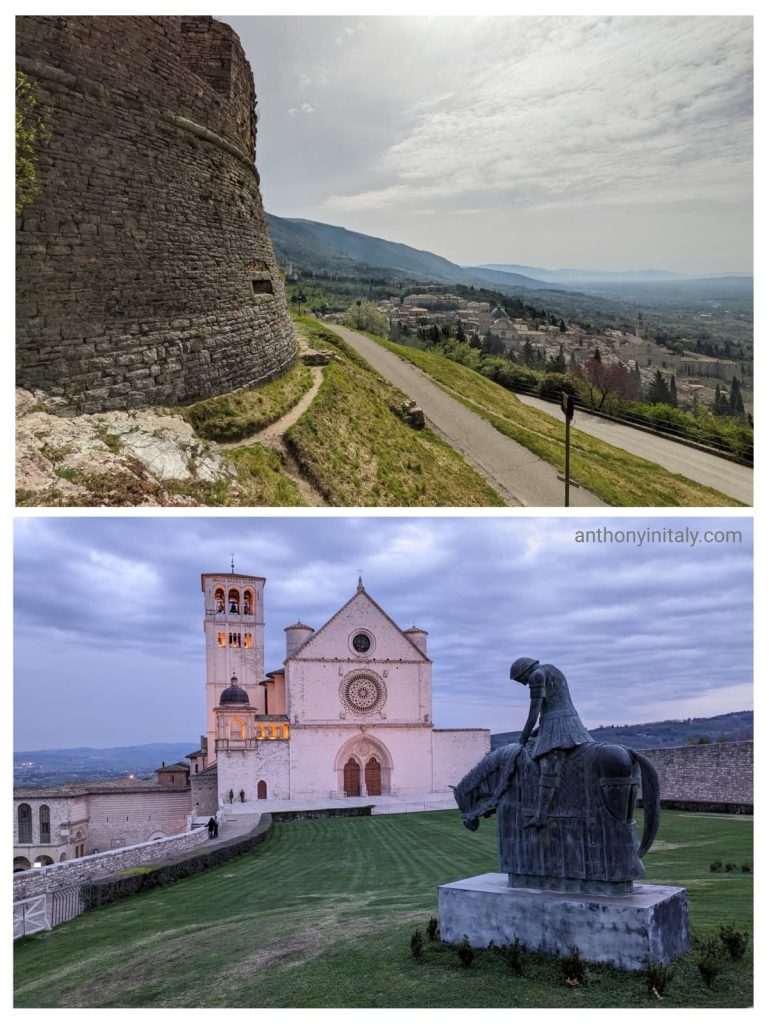
Once you’re in, everything is walkable. Just be ready for some climbing, especially up to Rocca Maggiore for panoramic medieval views. The Basilica of San Francesco is impressive, but I spend more time wandering the quieter upper streets. It’s also one of the cleanest towns in Umbria, probably due to the steady flow of visitors. There’s a solid sandwich shop inside Assisi Sapori I keep going back to.
3. Spoleto
Spoleto doesn’t always get the spotlight, which is part of why I like it. You can get here by train, then it’s a 10-minute walk (steep) or a quick local bus into the historic center.
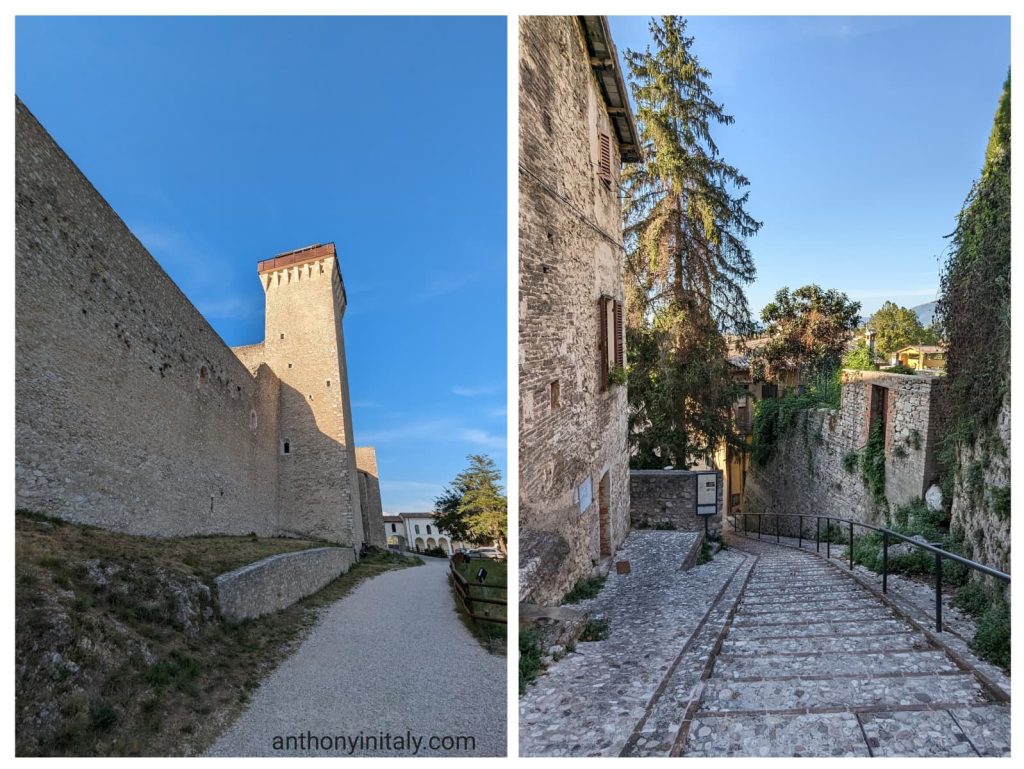
Once you’re in, it’s a mix of Roman ruins, medieval architecture, and a few unexpected modern touches. Check out the Roman theater, walk across the Ponte delle Torri, and don’t skip the climb to Rocca Albornoz. I always stop at Prosciutteria Del Corso for a sandwich.
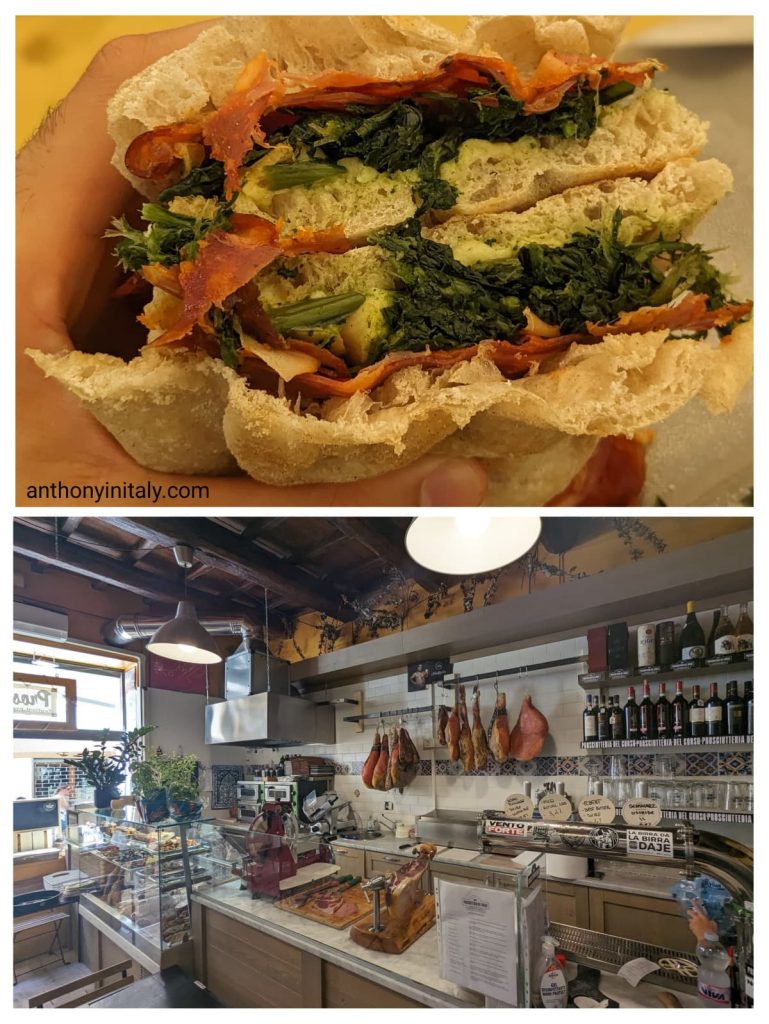
4. Spello
Just one stop before Assisi, and worth getting off early for. It’s small, quiet, and covered in flowers when the weather warms up. The station is a short, flat walk into town, but once you’re in the historic center, expect some climbing. You will take a lot of pictures here.
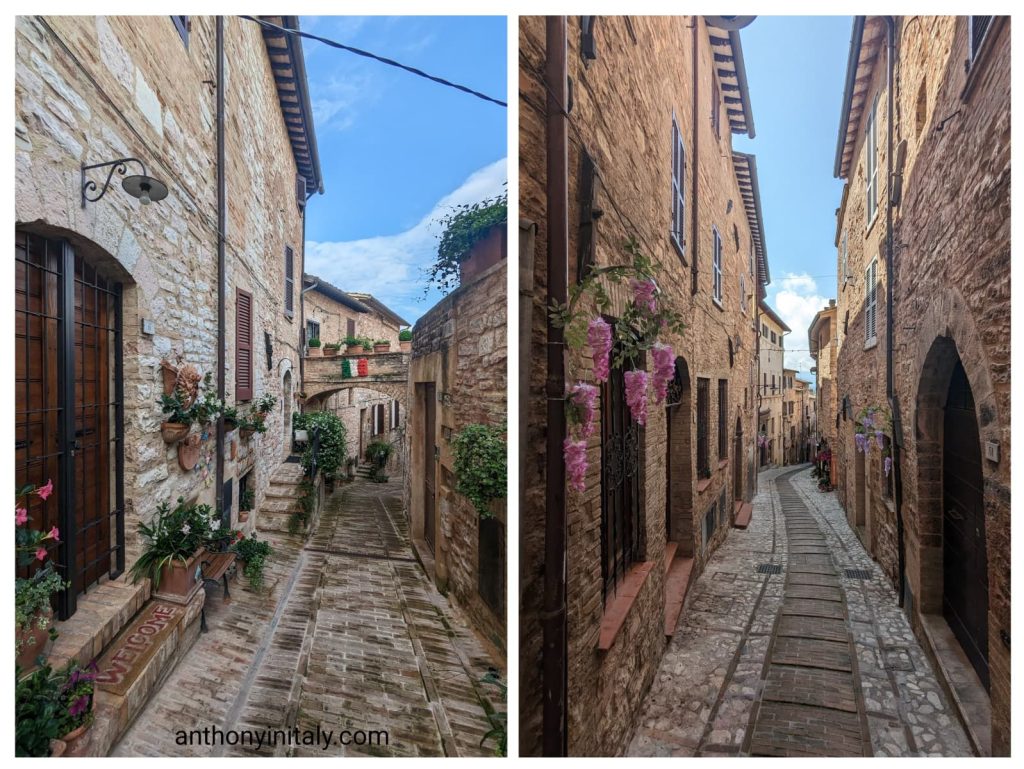
This is the kind of place I visit just to sit with a spritz and not do much else. I recommend Bar Giardino – Bonci. The bar itself is nothing special, but the back garden has a great view, space to breathe, and feels like your own little corner of town.
5. Passignano sul Trasimeno
You can reach this lakeside town easily by train. It’s relaxed, local, and avoids the tourist-trap vibes of bigger lake destinations. Perfect for a swim, a walk by the water, or a long lunch you don’t want to end.
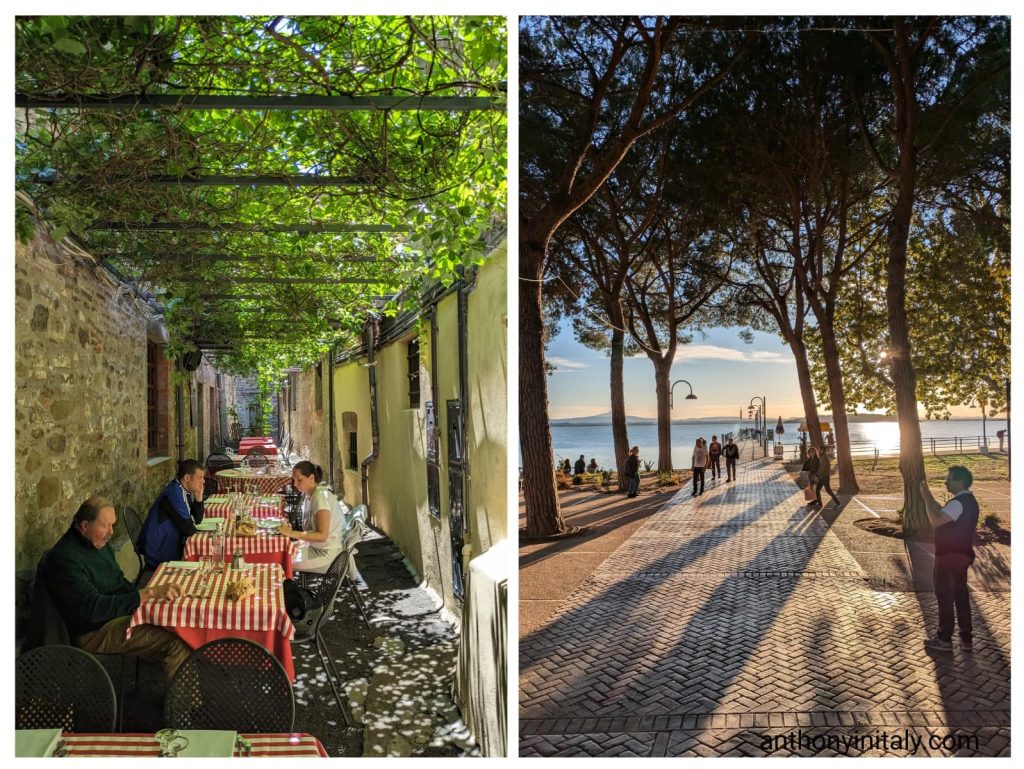
There’s also a ferry to Isola Maggiore, the main island in the lake. For drinks and a view, I like Giardini del Molo. For lunch, Osteria da Liam or Trattoria Del Pescatore are both good picks.
6. Foligno
Not the flashiest name on this list, but don’t sleep on it. I used to live in Foligno. While it’s not built for tourists, it’s absolutely worth your time. While it has it’s pockets, overall it’s not as quaint or picturesque as others on this list. But it’s a solid base if you care more about local life and seeing how Italians actually live.
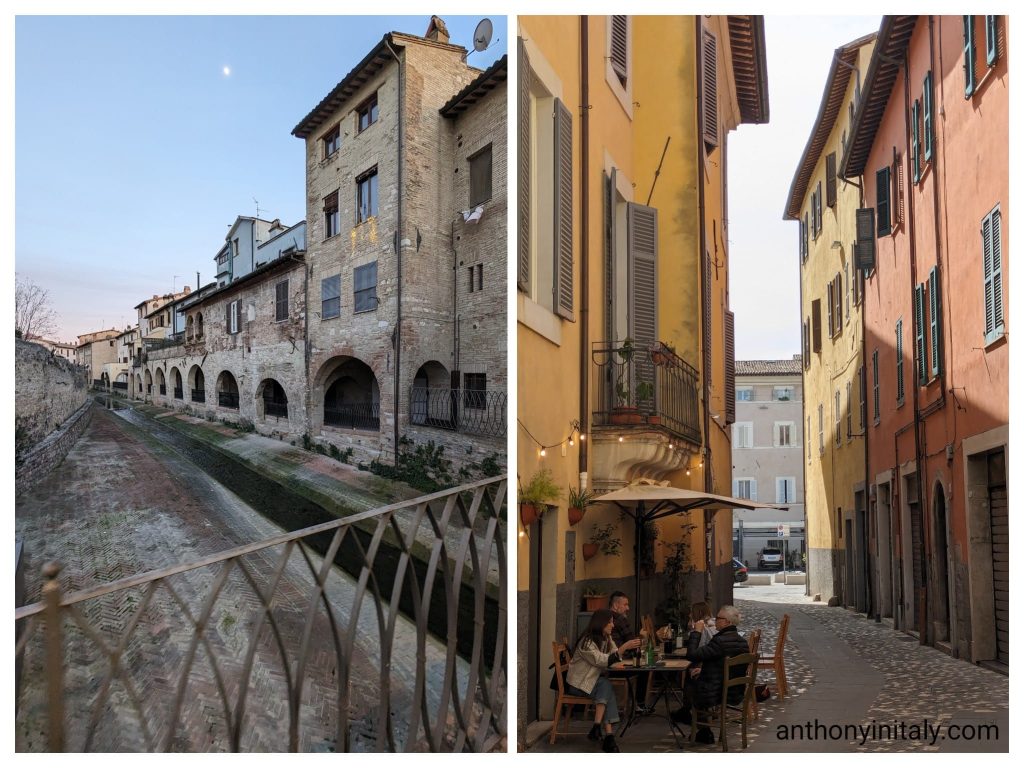
It’s flat, walkable, and feels like a real, lived-in city. Foligno is also a great jumping-off point if you’re visiting Spello, Assisi, or Spoleto without changing hotels. Expect some stares—locals aren’t used to outsiders sticking around—but if you want to see what small-town yet urban Umbrian life actually looks like (especially on a Friday or Saturday night along Via Gramsci), this is it.
Food and drink options are better than you’d expect for a town this size. And from here, you can easily catch local buses to Bevagna and Montefalco.
Getting around Umbria without a car isn’t just possible—it’s a better way to slow down. You notice how towns connect. You meet people on the train. You’re not just passing through, you’re part of it.
By the way, if you’re planning a trip to Italy and want a no-fluff checklist to help you get organized, I put one together here:
👉 Download my free Italy travel checklist

